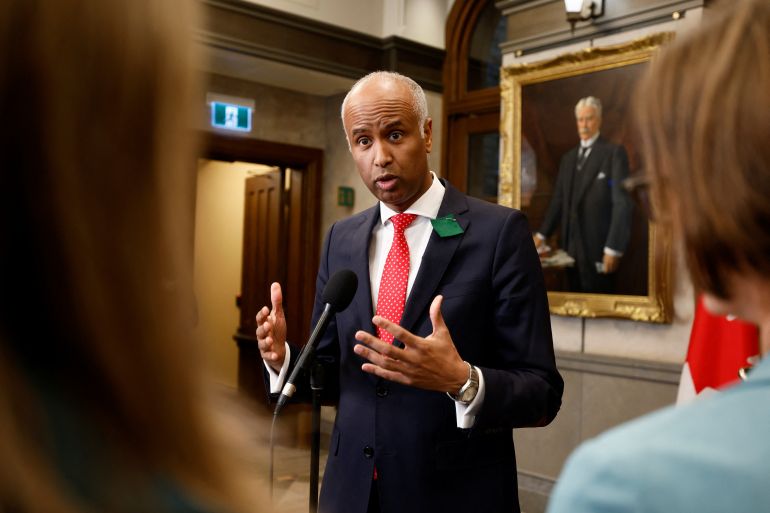Canals used to drain peatlands are underappreciated hotspots for carbon emissions
The study found that one-third of the organic carbon leached from peatland soils into canal waters gets broken down and released into the atmosphere as carbon dioxide
IMAGE:
CANAL DITCHES LIKE THIS ONE IN WEST KALIMANTAN, INDONESIA ARE OFTEN USED TO DRAIN PEATLANDS FOR CONVERSION TO AGRICULTURE. CREDIT: JENNIFER BOWEN
view moreCREDIT: CREDIT: JENNIFER BOWEN
A new study led by UC San Diego Scripps Institution of Oceanography postdoctoral scholar Jennifer Bowen finds that canals used to drain soggy peatlands in Southeast Asia are likely hotspots for greenhouse gas emissions.
The results, published March 8 in Nature Geoscience and supported by the Scripps Institutional Postdoctoral Program and Stanford University’s Precourt Institute for Energy, identify a previously unaccounted for source of emissions from these threatened, carbon-rich landscapes. Findings from the study suggest that the degradation of tropical peatlands in Southeast Asia has released even more planet-warming carbon dioxide than previously estimated.
Peatlands cover just 3% of Earth’s land surface, but they store twice as much carbon as all the world’s forests combined. Peatlands form in places where year-round flooding prevents dead plants from fully breaking down by limiting their exposure to oxygen. These water-logged conditions allow dead plants – and the carbon that they absorbed from the atmosphere while growing – to accumulate in the peat soil over hundreds or even thousands of years.
But human activities have damaged or destroyed many of the world’s peatlands. In Southeast Asia, people have drained and deforested around 60 million acres of peatlands over the past three decades, largely for palm oil and timber harvest, leaving only 6% untouched. Draining and damaging peatlands exposes their accumulated dead plant material to oxygen, causing it to decompose and release carbon dioxide. Globally, degraded peatlands alone account for around 5% of human-caused greenhouse gas emissions annually.
“These are some of the largest stores of carbon in the world outside of the ocean and they’ve been locked up for thousands of years,” said Lihini Aluwihare, a chemical oceanographer at Scripps Oceanography and co-author of the study. “Reintroducing any of that carbon into the atmosphere is of major concern when it comes to climate change. That’s why it’s so important that we figure out what controls the release of carbon from disturbed peatlands.”
But even this daunting tally of the carbon emissions from degraded peatlands largely focuses on the emissions from dried out peat soils and rarely accounts for the carbon released into waterways.
“We know that damaged peatlands are releasing large amounts of carbon dioxide,” said Bowen. “But what happens to the carbon flowing through drainage canals before it reaches rivers or the ocean is less understood. If we don’t know what’s happening there we could be missing carbon that is entering Earth’s atmosphere and not being accounted for in the current carbon budget.”
To understand what happens to carbon released from peatlands into waterways, the researchers collected water samples from peatland canals in West Kalimantan, Indonesia in 2022. In a series of lab experiments, the study authors measured how quickly microbes could break down the organic matter in vials of peatland canal water and how much carbon dioxide they produced in the process. In additional experiments, the team measured the rate of a process known as photochemical mineralization in which sunlight causes organic matter to break down and give off carbon dioxide.
Once Bowen and her co-authors figured out the rate at which microbes and sunlight produced carbon dioxide in the lab, they assessed the factors likely to accelerate or slow carbon emissions from peatland drainage canals in the real world across Southeast Asia. The experiments suggest that sunnier days, higher oxygen concentrations in the canal water, and high levels of mixing within canal waters can lead to higher rates of carbon dioxide emissions.
Based on the results of the experiments, the team estimated that each square meter of peatland canal area in the region releases an average of roughly 70 milligrams of carbon dioxide per day. More work is needed to identify where rates may be higher or lower on the landscape, said Bowen, but the results suggest breakdown by sunlight and microbes may send around 35% of the peat carbon that dissolves into the drainage canals into the atmosphere as carbon dioxide.
“This is the first time anyone has quantified these processes in a tropical peatland, and 35% of the carbon dissolving into these canals is a lot of emissions,” said Aluwihare. “To me, this says that these canal systems are likely a significant source of carbon dioxide emissions on top of the emissions from dried out peat soils, and we are probably underestimating the climate impacts of degrading these systems.”
Aluwihare added that the significant carbon emissions in the peatland canals are likely diminishing the amount of dissolved peat being exported to the ocean. While the fate of peat carbon flowing into the oceans isn’t entirely understood, some may end up being stored again in the marine environment. If that’s the case, Aluwihare said, these results suggest the oceans can’t do as much as scientists thought to prevent peat carbon from re-entering the atmosphere.
In addition to Bowen and Aluwihare, Putri Juliandini Wahyudio and Gusti Anshari of the Universitas Tanjungpura in Indonesia as well as Alison Hoyt of Stanford University contributed to the study.
JOURNAL
Nature Geoscience
ARTICLE TITLE
Canal networks regulate aquatic losses of carbon from degraded tropical peatlands
ARTICLE PUBLICATION DATE
8-Mar-2024



